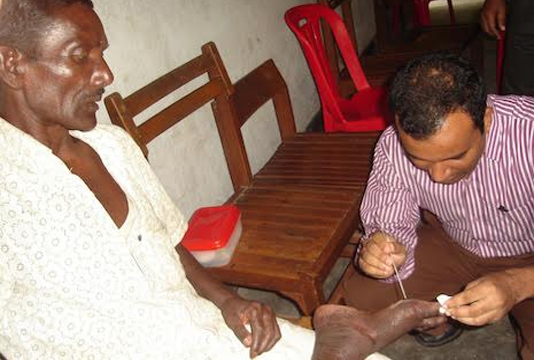RAJSHAHI, Feb 7, 2020 (BSS) – Health experts have stressed the need for
taking a comprehensive effort to detect all the leprosy cases early as the
disease is curable, aiming to build a leprosy-free society.
They said importance should be given on creating mass awareness about the
signs and symptoms of leprosy and ensuring treatment for all leprosy patients
free of cost.
Talking to BSS here Dr Afsar Siddiqui, Assistant Professor in the
Department of Sex, Skin and Venereal Diseases in Rajshahi Medical College
Hospital, said leprosy mainly affects the skin and superficial segments of
peripheral nerves, but can affect any tissue except brain and spinal cord.
However, it is not a hereditary disease, he identically mentioned.
Describing the major signs and symptoms of leprosy, he said the late case
diagnosis, little knowledge among community people, social stigma and limited
mental health services are the major challenges towards eradication of the
disease.
As leprosy service providers are limited in the country, the physician
said, authorities concerned should extend cooperation towards the existing
organisations giving services to leprosy patients and encourage new doctors
to work for the leprosy patients.
Social awareness must be created so that no leprosy patient remains out of
treatment since the untreated cases are the only source of more infection, Dr
Afsar said.
He said the major signs and symptoms of leprosy are hypo-pigmented
anesthetic skin patch, nodules under the skin and thickening of earlobe,
depressed nose, painless ulcer, numbness of fingers or claw fingers, foot
drop due to damage of lateral palatal nerve and lagophthalmos due to facial
nerve damage.
Leprosy expert Dr Siddiqui emphasized that the illness is not infectious.
“People in villages are superstitious and ignorant. They consider leprosy a
curse but it isn’t,” he said.
Apart from the government agencies, Damien Foundation Bangladesh is
implementing ‘Rajshahi Tuberculosis and Leprosy Control Project’ in
collaboration with the Ministry of Health to address leprosy disease in the
country.
The project is being implemented at 25 upazilas in three districts —
Rajshahi, Naogaon and Chapainawabganj – covering around 70 lakh people.
In last 2019, 138 new leprosy cases have been detected among 4,387
suspected ones in the project-covering areas, said Arif Iftekhar Mannan,
Director of the project.
He said the region has made significant progress in leprosy control over
the last few decades, but still a large number of patients remain undiagnosed
due to lack of awareness. “Good treatment can completely cure a leper within
one year,” he added.
Dr Abdus Sobhan, former divisional director of Health Directorate, said
Bangladesh has made marked progress in the control of leprosy by achieving
its elimination goal.
Voluntary groups joined the campaign and there are now a total of 625
leprosy treatment facilities across the country. Their widespread
accessibility and the new multi-drug therapies prescribed by WHO have helped
reduce the disease dramatically.
Dr Sobhan, however, said, collaborative efforts and adequate resources from
the higher authorities concerned, including the donor agencies, are needed to
achieve the total elimination of the disease.



